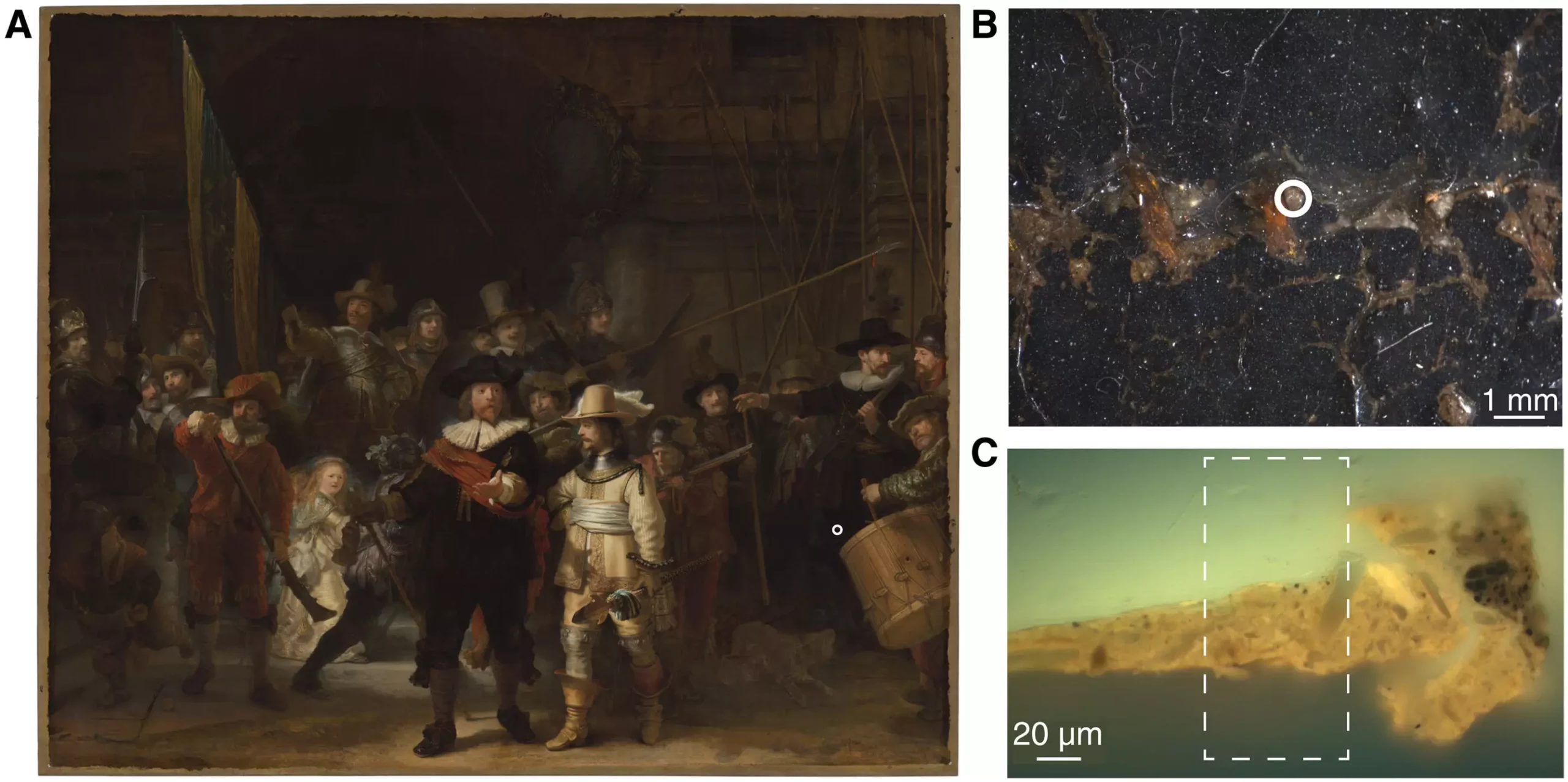New research conducted on Rembrandt’s famous 1642 militia painting, “The Night Watch,” has uncovered groundbreaking information about the artist’s innovative techniques. This discovery challenges the conventional understanding of Rembrandt’s approach to painting and sheds light on his willingness to experiment with new materials. The research, which forms part of the monumental Operation Night Watch project, involved advanced analysis of an actual paint sample from the artwork. Published in Science Advances, the findings reveal that Rembrandt impregnated the canvas with a lead-containing substance before applying the ground layer, a technique never before observed with Rembrandt or his contemporaries.
Rembrandt’s artistic genius and willingness to embrace novel techniques are underscored by the recent discovery. The lead-based impregnation of the canvas, detected through a combination of X-ray fluorescence and ptychography, demonstrates his innovative approach to painting. Despite the absence of historical evidence regarding this impregnation procedure, Rembrandt’s ability to think outside the box is evident here. This unexpected finding further solidifies Rembrandt’s place as one of history’s most inventive painters.
The research revealed that Rembrandt used a quartz-clay ground layer on “The Night Watch,” a fact established through prior investigations. Interestingly, Rembrandt had previously employed double grounds, consisting of a red earth pigment first ground followed by a lead white containing ground in his earlier paintings. Examining the large size of “The Night Watch” and its intended placement on the damp outer wall of the Kloveniersdoelen suggests that Rembrandt sought a more affordable, lightweight, and flexible alternative for the ground layer. To address concerns about the failure of the common method of preparing the canvas using animal glue under humid conditions, Rembrandt may have drawn inspiration from Théodore de Mayerne’s contemporary source on painting techniques. This source recommended impregnation with lead-rich oil as a substitute.
The use of correlated X-ray fluorescence and ptychographic nano-tomography on a historical paint sample allowed the researchers to uncover the presence of a lead-rich layer beneath the quartz-clay ground layer. Through this innovative imaging technique, even the lightest elements and organic fractions became visible, enabling a detailed understanding of the painting’s composition. The groundbreaking exploration of the microsample taken from “The Night Watch” revealed the consistent presence of dispersed lead in the ground layer closest to the canvas support, a surprising observation considering the absence of lead components in the expected layer. By combining these findings with the lead distribution map obtained through X-ray fluorescence scanning of the entire painting, the researchers ascertained that lead was present throughout “The Night Watch.” The distribution pattern suggested the use of large semi-circular brushstrokes, further supporting the hypothesis that lead impregnation played a crucial role in the artwork’s creation. Additionally, the lead distribution map unraveled even more secrets, revealing an imprint of the original strainer onto which the canvas was stretched during the preparatory stages.
The findings from the Operation Night Watch research project have shed new light on Rembrandt’s revolutionary techniques employed in the creation of “The Night Watch.” The discovery of lead-based impregnation of the canvas emphasizes Rembrandt’s inventive and forward-thinking nature as an artist. By challenging traditional approaches and experimenting with new materials, Rembrandt was able to push the boundaries of his craft. This groundbreaking research not only enhances our understanding of “The Night Watch” but also showcases the innovative spirit and genius of one of history’s greatest painters. Rembrandt’s ability to continually surprise and captivate us even centuries later solidifies his undeniable status as a master artist.


Leave a Reply